Supreme Court Ruling - Key Information for Educators

Written by DiverseEd
Diverse Educators started as a grassroots network in 2018 to create a space for a coherent and cohesive conversation about DEI. We have evolved into a training provider and event organiser for all things DEI.
Introduction
Last week the UK Supreme Court shared their ruling on the case For Women Scotland Ltd v The Scottish Minister, which interprets the legal definition of the word ‘woman’, as used in the context of The Equality Act 2010.
Since the court handed down on Wednesday 16th April, the ruling has been spoken about extensively in the regulated media, unregulated social media, and in Parliament. We have read and listened to much of the coverage from diverse sources, and in our opinion the ruling is not being explained accurately or appropriately by many. Those pleased with the ruling are often exaggerating, misinterpreting or misrepresenting the details of the case, whereas those hurt by the ruling are at times using catastrophising language, which in our opinion is unhelpful and may act to exacerbate the fear that many trans people are currently experiencing.
Our intention in this piece is to present the details as accurately and clearly as we can. In order to do so, we have tried to avoid presenting our own opinions in much of the following piece. However, we think it is important to be transparent before we begin. We know trans people, we love them, we live our lives alongside them, and we are deeply concerned about the way this ruling is already impacting their lives. We believe that it is the duty of our government to enact laws which provide workable and inclusive protection from discrimination, and ensure dignity and respect for all people – including transgender people. With that clear, let’s begin.
Background
In 2018 the Scottish Government presented a new law, which aimed to get more women on public boards. The Scottish Government included trans women who had obtained a Gender Recognition Certificate (GRC) within this aim, which they felt was in-line with The Equality Act 2010, and the Gender Recognition Act 2004. However, the group For Women Scotland disagreed – they felt The Equality Act 2010’s protected characteristic of ‘sex’, and specifically its use of the word ‘woman’, was not intended when written to include trans women.
For Women Scotland therefore brought a judicial review to the UK Supreme Court, requesting they review the lawfulness of the Scottish Government’s position in relation to The Equality Act 2010. Therefore, it was the job of the UK Supreme Court to provide a statutory interpretation of the meaning of ‘man’, ‘woman’, and ‘sex’ as used in The Equality Act 2010, and specifically whether that definition includes trans women who have a GRC.
The Ruling
The UK Supreme Court unanimously agreed that Parliament did not intend for the definition of ‘woman’ as used in The Equality Act 2010 to include trans women. Rather, the Court ruled that ‘sex’ in The Equality Act 2010 refers to ‘biological sex’ (a term which neither the law or the court defines clearly), and thus does not include trans individuals – whether they have obtained a GRC or not. The decision was made because to include transgender people who have a GRC within The Equality Act 2010 definition would make the law unworkable.
There are some details of the ruling which we think are important.
Firstly, the ruling is specifically addressing the definitions as used in The Equality Act 2010. The judge, when handing down the ruling, explained that the origins of the language used in The Equality Act 2010 is the Sex Discrimination Act 1975, which the judge stated, ‘adopted a biological interpretation of the terms men and women’. Note the wording here – the Acts have adopted an interpretation. This ruling does not define what a woman is – it interprets what it means in the specific context of a 15-year-old Act, which pulls on an interpretation used in 1975.
Secondly, this ruling does not justify the discrimination of trans people. The court clarified several times during their hand down that trans people are still protected from discrimination under The Equality Act 2010, which includes ‘Gender Reassignment’ as a protected characteristic. The judge explained that this protection extends to cover trans people whether they have a GRC, or not. Furthermore, there is some legal precedent that non-binary people may also be protected under this characteristic – although this is legal precedent and not case law. The judge also clarified that transgender women can still be protected under the characteristic of ‘sex’ through associated or perceived protections of women. We think it is also important to note that the judge at all times used respectful and correctly gendered language when talking about trans people – stating clearly that this ruling should not be seen as a triumph for any one group over another.
Finally, we think it is contextually important to understand that the court system in the UK interprets the laws which are enacted by Parliament. This ruling is thus an interpretation of law, and our current government can clarify this interpretation, or change the law to make it workable and inclusive, should they wish to.
What does this mean for society, and for schools?
The legal implication of this ruling is that single-sex spaces may now exclude trans men and women. Crucially, they do not have to, but they may now legally choose to if they can demonstrate that this choice is a ‘proportionate means of achieving a legitimate aim’. In society, this may impact: public toilets and changing spaces; sports groups and professional sports; support groups, spaces, or refuges; prisons; and other single-sex segregated spaces.
In schools, it has never been possible for young people to obtain a GRC, but this ruling may still impact: single-sex schools; school toilets and changing spaces; physical education and sport; and residential accommodation. In each of these areas, a school may now legally choose to exclude trans young people (or trans staff) from single-sex spaces if they can demonstrate that this choice is a proportionate means to achieving a legitimate aim. Again, they do not have to choose to exclude trans people – but they may now legally choose to in relation to single-sex spaces. For example, it would now be legal for a school single sex sports groups to exclude trans young people – or for schools to prevent trans young people from accessing the toilet aligned with their gender. Again, these decisions are not legally necessary – but they are now legally possible.
Although this is currently the only legal implication of this ruling, we are already seeing the misrepresentation of this ruling creating social implications beyond the legal bounds of the case. Transgender discrimination is increasing, and cis-gender people are already being discriminated against because of false assumptions about their gender. Although trans-exclusionary single-sex provision is now legal in certain circumstances, it is difficult to enforce or police without making assumptions which could be false. We predict that this ruling will also impact staff confidence in discussing trans identities and the protected characteristic of ‘Gender Reassignment’, which could impact the inclusive quality of Relationships, Sex, and Health Education (RSHE) and Personal, Social, Health Economics (PSHE).
There is a lot of misinformation, which is leading to worsening, and at times unlawful, discriminatory language and behaviour. Government Ministers have stated the ruling requires transgender people to use toilets related to their sex assigned at birth – this is not stated in the ruling. The Prime Minister has claimed the ruling offers clarity by defining women as biological women – this is misleading as the court judgement only pertains to an interpretation of what was meant by Parliament in The Equality Act 2010, and as clarified above it is parliament who enact and change law. Our current government could clarify or change law to make it workable and inclusive, should they wish to – the courts do not dictate definitions to Parliament.
Suggested Actions
We hope that reading this piece has helped you to feel more informed about the Supreme Court ruling. Below are some actions you may wish to undertake as a result of what you have read:
- Please challenge mischaracterisations of this ruling and clarify that transgender people are still legally protected from discrimination, and that any decision to exclude them from single-sex spaces, whilst legal, is a choice. Schools and other organisations can still choose a trans inclusive approach.
- Revisit policies – this ruling may require more accurate and thought-out language in policies which reference men and women, boys and girls, or The Equality Act 2010 protected characteristics of Sex and Gender Reassignment.
- If you are concerned about this ruling, and the impact it will have on transgender people (as well as cis-gender people who are wrongfully assumed to be transgender), then please take the time to write to your local MP and express your concern. You may wish to call for a trans-inclusive review and update of The Equality Act 2010. Remember, Parliament makes the laws, and the courts can only interpret them – our current government can change The Equality Act to include more clear and inclusive definitions which provide workable protections and dignity to all people – including transgender people. You may also choose to write directly to our Prime Minister (see Trans Actual guidance here).
- Read and share our Diverse Educators Resources to support you and your school community. Here is our Transgender Rights’ Toolkit and here is our Growing Trans and Non-Binary Awareness Training.
Further Resources
- A clear and accurate legal explanation from Kalina Hagen – Click Here
- Trans Actual Response – Click Here
True Inclusion Starts with Seeing Students for Who They Are
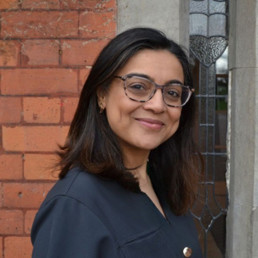
Written by Purvi Gandhi
Purvi Gandhi, MA MBA FCCT CPsychol is a psychologist, educator, and advocate for student wellbeing, leadership, and equity in education. With a career spanning clinical psychology, secondary and post-secondary education, and educational leadership, she bridges mental health and education through evidence-informed practice. She is the author of A Little Guide for Teachers: Student Mental Health, a practical resource for educators.
Imagine stepping into a new environment where your name is mispronounced or shortened to something more “convenient.” It’s a minor inconvenience, perhaps, but one that over time chips away at your sense of belonging. Now imagine this happening every day, in a place where you are supposed to grow, learn, and thrive.
For many students, particularly those from ethnic minority backgrounds, this is not hypothetical—it is their daily reality. And yet, within the walls of our classrooms, the power of a name is often underestimated. Names are not just labels; they carry history, identity, and cultural heritage. To overlook them is to overlook the student. To get them right is to affirm who they are.
Beyond Good Intentions: Why Inclusion Must Be Active
In a recent workshop with early career teachers, we explored what it really means to create inclusive classrooms—beyond policies, beyond slogans, and into the lived experiences of students. The session began with a simple but revealing exercise: storytelling.
One African tale set the tone. A great flood sweeps through the land, and every animal finds a way to escape—even the mighty crocodile. High up in the trees, the monkeys spot a fish struggling in the floodwaters. Moved by compassion, they “rescue” it, placing it safely on a branch. Of course, the fish begins to suffocate.
The lesson is clear: good intentions do not equate to good outcomes. In education, a one-size-fits-all approach can be just as ineffective as the monkeys’ well-meaning mistake. Every student has unique needs, shaped by culture, background, and identity. The question is, are we paying attention?
Consider this: A teacher, in an off-the-cuff remark during a classroom discussion on relationships, casually states that arranged marriages are “backward” or “unfair.” It’s not intended to harm, just a spontaneous reaction based on personal beliefs. But what if a student from a culture where arranged marriages are the norm is sitting there, quietly absorbing that statement?
Perhaps this student has spent years trying to navigate the space between two worlds—balancing the values of their family with the expectations of the society they are growing up in. Now, in a single moment, they are made to feel that their culture is lesser. They may go home carrying this conflict, questioning their parents, their upbringing, and where they truly belong. Suddenly, they feel like an outsider in both places—neither fully at home at school nor at home with their family.
This is the impact of uninformed assumptions. Educators do not just teach subjects; they shape perspectives. A thoughtless comment can widen the gap between a young person and their identity, making them feel alienated rather than empowered.
To be truly inclusive, we must move beyond our own perceptions and seek to understand the lived experiences of others. We must create spaces where students don’t feel forced to choose between their heritage and their education, but rather see their identities reflected and respected within the school environment.
Because, just like the fish in the flood, what a student truly needs may not be what we assume is best for them. Listening, learning, and adapting is the key to meaningful inclusion.
Rethinking What It Means to ‘See’ Our Students
An alternative version of the tale drove the point home. In this retelling, the animals hold a competition to see who can see the farthest. The eagle soars and surveys the horizon, the giraffe gazes across the savanna, and the monkey takes in the view from the treetops. When it’s the fish’s turn, it can only see the immediate waters around it. The other animals laugh—until the fish explains that while they focus on the distance, it detects subtle currents, hidden dangers, and movements they cannot perceive.
Here lies a second lesson: students should not be judged against a singular definition of success. The education system, often fixated on rigid measures of ability, risks missing the unique strengths that lie beneath the surface. A student who struggles with traditional assessments may have an extraordinary ability to lead, innovate, or empathize—if only we are willing to recognize it.
The Power of a Name
Of all the discussions that day, one stood out: the impact of names. Inspired by Bennie Kara’s work on diversity in education, we asked teachers to explore their own names—their meanings, origins, and the personal stories behind them. What followed was a conversation about identity, belonging, and the small but significant ways that schools can either affirm or erode a student’s sense of self.
One student shared how her intended name was “Yah Yah,” meaning “gift from God,” but her parents, wanting to make life easier in an English-speaking country, renamed her Ysabella. She was seated alongside another student, Anjali, whose name means “gift to God.” Here were two students, from different cultures, bound by the same idea: they were gifts.
Imagine the impact of recognising that connection—not as a coincidence, but as an intentional act of inclusion. When we take the time to pronounce a name correctly, to understand its meaning, or even to ask about it, we are sending a powerful message: You belong here.
Moving From Awareness to Action
It is easy to talk about inclusion in broad terms. It is harder—but far more necessary—to embed it into daily teaching practice. The workshop concluded with three core reflections for teachers:
- Cultural Competence: How much do I really know about my students’ backgrounds? Where are the gaps? What steps can I take to learn more?
- Equity Over Equality: Do I recognize the unique needs of my students? How can I tailor my support to meet them where they are?
- Celebrating Identity: What cultural capital do my students bring into the classroom? How can I acknowledge and honour it?
Education is not just about imparting knowledge; it is about shaping identities. A student who feels unseen will struggle to engage. A student who feels valued will thrive.
The work of inclusion is not grandiose. It does not require a total overhaul of curriculum or sweeping policy changes. It starts with the smallest of acts: a correctly pronounced name, a thoughtful seating plan, a recognition that success looks different for everyone.
And perhaps, that is the greatest takeaway of all—belonging is built in the details.
References:
Fernando-Smith,L and Aow, A, (2024), ‘Letting go of imposter syndrome: writing herstory.’ In Disruptive Women – A Guide for Equitable Action in Education, Corwin
Kara, B., 2020. A little guide for teachers: Diversity in schools, Corwin
Pierson, R., 2013. Every kid needs a champion. TED Talks Education.
Leaders Engagement in Mothers’ Matters
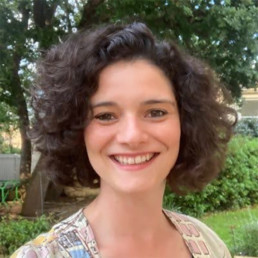
Written by Emma Sheppard
Emma founded The MTPT Project, the UK's charity for parent teachers, in 2016 when on maternity leave with her first child. She has 12 years experience as an English teacher, Lead Practitioner and ITT Lead, and now runs The MTPT Project full time.
At The MTPT Project, we take our commitment to inclusion seriously. As Founder, I love reviewing our data annually for our Diversity and Inclusion report, the way that this informs our strategies as a small charity and the impact this then goes on to have.
One of these strategies to come out of our 2023-24 report was to improve engagement tracking at events directed to leaders in our sector. We are curious to know whether our work is perceived – in broad terms – as workforce and retention or diversity and mothers.
It makes sense that our programmes aimed at staff who are parents attract an overwhelmingly female audience. Because of our national and sector parenting policies, mothers are still afforded more paid time on birthing maternity leave than fathers and non-birthing partners, and this is when gendered routines around parenting take root and influence the division of domestic and professional labour in the long term – particularly in heterosexual couples.
Our leadership work, however, is aimed at senior leaders and above. Statistically, these are positions where men are over-represented at both primary and secondary level. If our work is (correctly) seen as workforce and retention, then up to 60% of our audience at these events should be men.
At this mid-point in the year, then, how far do school leaders still consider the retention, progression and wellbeing of parent-teachers as a ‘mothers matter’?
We’ve tracked data over 15 events – most of which have been optional to attend – aimed at school and systems leaders, and this is what we’ve found:
- On average, just 17% of attendees at these events have been men
- On three occasions, there has not been a single male face in the room
- Three events have hit our starter target of 24% male representation (the proportion of men in the wider teacher workforce, not at leadership level) and these were events billed as retention, flexible working, or an obligatory meeting for local headteachers
We count a number of men within our professional network who show up regularly to champion the work that we do. They sign off funding, make introductions, speak up on behalf of our community, work on research and data projects, platform our work on social media and speak at our events.
But men are not showing up enough as audience members to learn about the daily, and systems-wide practice that can be implemented to support working mothers for the overall health of our workforce and – ultimately – the schools they are leading.
An acute example of this disconnect: 22% of the speakers at The MTPT Project’s Missing Mothers conference are fathers and leaders from our community, but – two weeks ahead of the event – not one of the 135 ticket holders are men.
When organisations are considered who is “best placed” to attend MTPT events, the data suggests that they are still sending leaders with first-hand experience of motherhood. Clearly, the view is that these mothers’ matters are best handled between mothers and by mothers.
Statistically, however, these mothers, sorting things out between themselves, are less likely to be in leadership positions than men. They are less likely to wield decision-making power and they are less able to role model effective allyship to other men.
If we really want to make a sustainable difference to the teacher retention crisis, our male leaders need to stop seeing mothers as a diversity group, and instead know that mothers are workforce.
To Belong Is Not Enough: Why We Must Move Towards Mattering
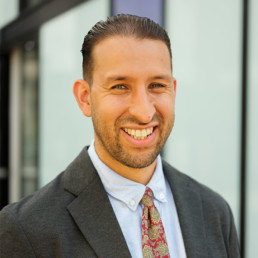
Written by Mohamed Abdallah
With almost two decades of experience, Mohamed started his journey in youth work and pupil referral units before spearheading groundbreaking inclusive practices and systems as a leader in an 'Outstanding' all-through mainstream school. Driven by a relentless commitment to positive change, Mohamed now dedicates his efforts to collaborating with school leaders across the nation as the Head of the Inclusive Leadership Course at The Difference.
“No one would care if I weren’t here.”
I can remember the words hitting me hard. As Designated Safeguarding Lead there were immediate red flags, but on a human level it broke my heart.
100% attendance, great progress, and never in trouble. On paper he belonged – but in reality he thought nobody cared.
Across the country, I hear the language of belonging increasingly referenced in discussions about student engagement, wellbeing, and success. And I welcome it. It’s a refreshing shift in our narrative about the student experience.
Still, something didn’t feel right. Then, it clicked.
It is not enough to simply belong; you should also matter.
My experience has shown me that a student can belong to a school community without ever feeling that their presence or contributions truly matter. A friend recently shared a US study with me that revealed a surprising finding: a sense of ‘belonging’ to a school community did not significantly affect academic performance. But instead there were other factors that determined success, such as participation and self regulated learning.
Think about it this way: You belong to a gym, but do the regulars know your name? You belong to a workplace, but do your ideas shape the way things are done? You belong to a school, but when you are absent, is there a noticeable void?
Mattering is more than belonging to a place or a community; it is about your significance.
One of the most prominent academic advocates for mattering is the US community psychologist Isaac Prilleltensky. He argues that developing a strong sense of mattering depends on two things: feeling you are valued, and feeling that you add value – whether that be within your workplace, your community, your family, or your friendship group. In the UK, my good friend Luke Billingham has been one of the most influential thinkers and writers on young people and mattering.
The Three Components of Mattering in Schools
After multiple voice notes back and forth, Luke and I sat down to discuss this matter (see what I did there!), and we asked:
If a student stopped coming to school tomorrow, would they feel like their absence was noticed?
Does every student have positive and affirming relationships with peers and at least one adult?
Are students actively shaping the school environment, or are they simply complying with expectations?
These questions helped us think more deeply about mattering. Of course, students should belong. But would we be satisfied as school leaders with 100% attendance, high attainment, and zero suspensions, yet students still told us, “No one would care if I weren’t here”?
They should feel they matter.
Reflecting on our experiences in different schools, Luke and I identified some key factors which we think enable students to develop mattering; Voice, Relationships, and Participation.
- Voice: Too often, schools claim to prioritise student voice while keeping real decision-making at the leadership level. But voice is not just about being heard. Schools must embed student experience and perspectives into decision-making, not just through surveys, but by creating opportunities for meaningful dialogue and change. Even when student perspectives challenge us, they offer uncomfortable truths we must engage with. When students see their input shape school culture, they matter.
- Relationships: A student might belong to a school, but do they have relationships that affirm their worth? Schools could cultivate opportunities for positive peer relationships to create strong social bonds, and to ensure every student has at least one trusted adult. Relationships built on trust and recognition, and environments where students feel valued and connected.
- Participation: Mattering isn’t just about feeling noticed, it’s about feeling needed. Students need opportunities to contribute meaningfully to their school communities. This goes beyond enrichment clubs; it means ensuring that students are actively shaping their environments. Whether through student-led campaigns, or engaging with the local community, authentic participation allows students to see their impact.
Why Mattering Matters for Inclusion
I worry that belonging is being used as a catch-all solution for inclusion, or dare I say it, a form of soft inclusion. For many students from marginalised backgrounds, belonging can feel conditional. They may be required to turn up, but do they feel like their presence and identity are essential? Do they see themselves reflected in the curriculum? Are their voices shaping school systems? Are their experiences acknowledged and valued?
Mattering addresses these questions by ensuring that students are not just included, but recognised as integral members of their schools. For students from underrepresented backgrounds, the feeling of mattering can be a protective factor against marginalisation and disengagement.
If we stop at belonging, we risk creating schools where students exist but don’t thrive, they comply but are disengaged, are included but unseen. The real challenge for schools isn’t just inclusion. It’s significance. Instead of asking, ‘Do our students belong?’ ask, ‘Do they know they matter?’
World Book Day 2025

Written by Robert Davies
Rob Davies is Associate Assistant Headteacher at Calderstones School in Liverpool. This role involves leading on anti-racism in education, sharing practical strategies, reflections, and initiatives to create a more inclusive, representative, and equitable school. He shares insights on decolonising the curriculum, diversifying reading materials, and fostering anti-racist practices in schools.
Another year, another World Book Day—same costumes, same characters. Harry and Hermione? Check. Little Red Riding Hood? Of course. The Gruffalo? Naturally. And let’s not forget Mrs. Trunchbull, stomping through the halls. Sound familiar? Thought so.
But here’s the thing—World Book Day can be so much more. It’s time to move beyond the usual suspects and reimagine it through a truly diverse lens. Let’s make it an event where every student sees themselves in the stories we celebrate.
Every year, World Book Day celebrates the magic of stories. But whose stories are we telling? Who do they inspire? When books and characters overwhelmingly reflect white, middle-class experiences, whose voices are missing? Are we selecting a diverse range of books that offer all children equitable opportunities to see themselves?
If not, isn’t it just Book Day?
At its core, World Book Day aims to “promote reading for pleasure, offering every child and young person the opportunity to have a book of their own.” But if we fail to approach it through an anti-racist lens, are we truly serving all students?
The Representation Gap in Children’s Books
In the UK, 33.5% of school-aged children come from ethnic minority backgrounds. Yet, between 2017 and 2019, only 7% of children’s books featured characters from these cultures—and just 5% had a Black, Asian, or Minority Ethnic main character.
Research shows that when children see themselves in books, it shapes their sense of identity and possibility.
Despite limited representation, excellent books exist that help students feel seen, foster belonging, and cultivate a love of reading. But do schools actively seek them out?
The issue goes beyond just introducing diverse books. What if teachers haven’t read them, or don’t understand their significance?
Whose culture has capital?
With a predominantly white teaching workforce (Runnymede Trust, 2020), how often is World Book Day shaped through an anti-racist lens? One of the biggest motivators for reading is emotion—how books make us feel (Dungworth et al., 2004). Naturally, educators promote books that resonated with them in childhood, shaped by their own experiences.
If most books being championed reflect the same narrow cultural perspectives, what message does that send? Who do these books inspire—and who gets left out?
Research further supports this. More children from ethnic minority backgrounds than white backgrounds say they don’t see themselves in what they read (40% vs. 30.5%), with Black students feeling this most acutely.
Making It a World Book Day
If World Book Day is to truly reflect all students, schools must take active steps to make it more inclusive. That’s exactly what we did at Calderstones School this year.
As one of Liverpool’s largest secondary comprehensive schools, diversity is our strength. But we recognised that World Book Day needed to reflect that diversity, ensuring all students felt represented and engaged.
So, we embraced the ‘world’ in World Book Day. We focused on books and authors from a variety of cultures and languages, fostering conversations about students’ mother tongues and cultural backgrounds.
We collaborated with Greenbank Primary School and Leeds Beckett University to involve primary school students and Global Ambassadors. Together, they read books from their home countries in their native languages—including Arabic, Basque, Farsi, French, Greek, Mandarin, Polish, Russian, Urdu, and more.
By showcasing this linguistic and cultural diversity, we highlighted the vital importance of representation in education. The readings were recorded, edited, and shared on the school’s social media. The response? Overwhelmingly positive. For many in our community, this was the first time their language and heritage were visibly celebrated in school.
How to Rethink World Book Day in Your School
If we are serious about delivering a truly inclusive World Book Day, here’s lets start with the following: 1. Move Beyond the Same Old Costumes
Rather than dressing up as characters from GCSE texts, consider why these books dominate the curriculum. Less than 1% of GCSE students study a book by a writer of colour—so why reproduce that marginalisation on World Book Day?
- Conduct a Student Voice
Ask students:
- What books would you love to explore?
- Do you see your culture and heritage reflected in the school library?
- What stories are missing from the shelves?
- Use these insights to shape book selections and discussions.
- Explore Translated Literature
Many beloved English books originated in other languages—Pinocchio was originally Italian. What other global stories could students discover? World Book Day can be an opportunity to highlight the rich traditions of storytelling from around the world.
Final Thought: A Call to Action
By embracing the ‘world’ in World Book Day, we made it more meaningful for our students. This is a step in the right direction—but it can’t stop here. Schools must challenge traditional reading lists, elevate diverse voices, and ensure that every child sees themselves in the stories they read.
We can’t diversify the teaching workforce overnight, but we can broaden our thinking. We must ensure that we view events like World Book Day through an anti-racist lens.
Because if World Book Day doesn’t include all stories, is it really World Book Day at all?
Ramadhan in Schools: building welcoming and inclusive spaces

Written by Maslaha
Maslaha works to change and challenge the conditions that create inequalities for Muslim and Black and brown communities in education, criminal justice, health and on the basis of gender, in a continued climate of Islamophobia, racism and negative media coverage.
For many Muslims, Ramadhan is a time of joy, community and to recharge spiritually. Yet whether it’s choosing to pray at lunchtime or wear a hijab during these days, visible expressions of faith are often met with hostility – expressions of ‘Muslimness’ are treated as a threat. In this way, Ramadhan exposes the Islamophobia that persists throughout the rest of the year.
As educators, we know that when young people feel safe bringing their whole selves to a space, it directly impacts their self-esteem, confidence and sense of belonging. This psychological safety affects not only wellbeing, it directly influences students’ engagement, attainment, and overall success in school.
Young people and families have shared how Islamophobia in schools and policies like The Prevent Duty have left them feeling isolated and led them to self-censor out of fear of judgement or even punishment.
We asked young people and their families what they would like their teachers to know, or do during Ramadhan. We put together what they said into this resource, and share five practical ways to create safe and inclusive spaces for students who choose to observe it: Ramadhan in schools
For more resources to support you build your anti-racist classroom, deliver a culturally-relevant curriculum and nurture safe spaces for all young people, see Education | Maslaha
Inclusive Recruitment: 20 Tips to Consider
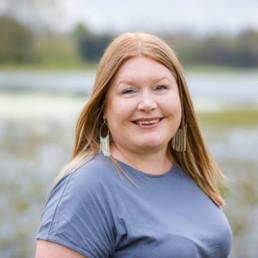
Written by Hannah Wilson
Founder of Diverse Educators
‘Diversifying Recruitment’ and ‘Inclusive Recruitment’ are two terms that we often hear being mentioned frequently in education circles, but what is the difference in approach?
Diverse or diversifying suggests the focus is on finding diverse candidates. Inclusive or ‘inclusifying’ (phrase coined by Professor Paul Miller which we have adopted) suggests the focus is instead on including diverse candidates. A subtle and nuanced difference which makes the commitment more authentic and meaningful for all parties.
As fans of Simon Sinek’s ‘Golden Circle’ from his TED Talk: ‘Start With Why’, we would suggest that you start in your thinking and in your discussions as an educational employer, by using the model (Golden Circle = Why > How > What) to map out and align the purpose of recruiting differently.
Example 1:
- Why do we want to diversify our staff body?
- How diverse is our community and how does this compare to our various stakeholder groups?
- What impact/ legacy are we striving for by diversifying our staff?
Example 2:
- Why do we want to make our recruitment process more inclusive?
- How inclusive are our existing policies, processes and practices?
- What is the impact of a more inclusive approach to our recruitment and to our workplace?
The clarity of understanding what we are trying to change and why we are trying to change it, is an important starting point in transforming how we do things. Moreover, becoming more conscious, confident and competent in identifying and removing/ reducing existing barriers facing candidates in the recruitment process is an ongoing training priority.
A shared understanding, a shared language and a shared approach will lead to a greater consistency in experience for all.
Some key language to consider and explore:
- ‘Unconscious bias’ – have we discussed this in advance of starting a recruitment process and have key stakeholders had training?
- ‘Glass ceiling’ – are we aware of where this sits above the women in education in the system and in our own organisation?
- ‘Concrete ceiling’ – are we aware of where this sits about the people of colour in education in the system and in our own organisation?
Moreover, have we discussed, are we values-aligned and do we have a strategic approach when it comes to topics such as flexible working and the pay gap?
We get asked a lot to support schools, colleges and trusts in their approach to recruitment, but the request is often too late in the process to make a real difference and to make changes meaningful. There are some quick wins you can make in the short term to create a more inclusive recruitment process and experience, but really this needs to be a medium to long term project and we need to be planning for Summer 2025 and Autumn 2025 activities to get us better prepared for the Spring 2026 recruitment.
Here are 20 tips to reflect on and discuss with colleagues:
Tip 1: Review the JD & PS – particularly look at what is down as being ‘desirable’ v ‘essential’ as some people will not apply if they do not meet all of the criteria. We are creating false barriers e.g. you must have the NASENCO or NPQH award to apply for this job is incorrect – they can be working towards it or start it once appointed.
Tip 2: Review the Job Advert – screen the wording for bias and especially review any gendered language. Some language choices will suggest only a certain type of candidate should apply e.g. for headship a leader ‘with gravitas’ might lead to more male candidates applying.
Tip 3: Articulate your DEIB Commitment – consider where in the initial documentation would a candidate know that you are on a DEIB journey and truly committed to change as an organisation. Do you have a DEIB statement that can be lifted and included? A policy and/ or a DEIB action plan that can be hyperlinked?
Tip 4: Share your Commitment to Flexible Working – research shows us that by mentioning an openness to flexible working you get an increase in applicants. Since the Flexible Working Bill was passed the system has had to consider flexible working as a recruitment tool as well as a retention tool. Make it explicit from the beginning of the process what might be possible so candidates do not waste your time and you do not waste their time either!
Tip 5: Consider where to Advertise – if we keep doing the same we will keep getting the same. Some Jobs Boards are very expensive and draw a certain audience. Diversifying where you are advertising can also lead to you finding more diverse candidates. E.g. for governance you can post adverts in special interest Linkedin groups and networks such as Black Governors Network.
Tip 6: Consider who is Sharing the Advert and where / to who – recruitment needs to become a team sport and not just the work of HR. If your staff are outward facing and are on socials, ask them to share opportunities with their networks. Push it beyond the immediate network around the organisation to find people beyond that.
Tip 7: Review the Application Form – you might already be doing all of the above and wondering why it is not working, but have you looked at the fields the candidate has to complete at application level and the information they have to read as often forms are out of date and undermine the DEIB work that is happening e.g. asking a question like What is your gender? With binary answers like M/F. How would someone trans or non-binary complete this question? How might this put off trans allies from applying too?
Tip 8: Review your ‘Shop Window’ – your organisation’s website and your social media accounts also need reviewing and updating so everything is harmonised. If you are saying in the call to action you are interested in hearing from diverse candidates who reflect the diversity of the local community, but your website imagery does not reflect this it creates dissonance. If the person running the social media accounts has not been briefed and is only amplifying white, male thought leaders and people who share exclusionary content online, this will contradict the DEIB commitment you have articulated and this will lead to further self deselection.
Tip 9: Create a ‘Blank’ Selection Process – lots of organisations pride themselves on running ‘blind’ recruitment processes. Consider how ableist this language is and how it might undermine your commitment to DEIB. Is there another way of sharing what you are doing to try to remove bias in the process from blanking out names, race, age, salaries and institutions candidates have worked/ studied at?
Tip 10: Diversify who is Involved in the Long and Short Listing Process – bias creeps in as soon as applicants start arriving. Different people reviewing and handling the applications will have their own biases around spelling, punctuation and grammar, around font choice and formatting, around language choices before you even start digging into the details. Consider who is involved in creating and applying the selection criteria and how you score the application.
Tip 11: Articulate in the Invitation to Interview what Support is Available – instead of waiting for diversity to wave at you and say ‘hey, I am different and need this from you…’ consider leading with what you can offer as adjustments and support, and share this with all candidates. E.g. On the day you will have access to allocated parking, a lift, a quiet room, a prayer room… we serve Halal food in our school kitchen. People will feel more comfortable confirming what they need to thrive at the interview, but this will also show all candidates that you are fully committed to inclusion.
Tip 12: Send out Interview Questions out in Advance – many institutions are now sending questions out in advance to support neurodivergent applicants with processing time. But this approach also benefits other candidates including those who are less confident, introverted or who have had some time out of the system. Everyone will perform better! There are concerns that people will cheat and use ChatGTP to craft responses but we will be able to identify a contrived response and interrogate further.
Tip 13: Create an Accessible and Inclusive Interview Experience – ensure the interview format, tasks and briefing documents are accessible for all candidates, thus removing any barriers. Build in a task or a question to check for values alignment to your organisational commitment to DEIB. Values tasks can be scenario-based but can also be sent out in advance to reflect on and prepare as a pre-task to share at the interview.
Tip 14: Consider all of the Candidate Touchstones – curate the range of people that the candidates will interact with at each point of the process from ringing up to book a visit, coming for a pre-interview tour, to the day itself and communications from the HR lead before, during and after. Where are the opportunities for candidates to see themselves and other diverse identities in the process?
Tip 15: Be Authentic and Honest, Avoid Being Performative – we get regular feedback from candidates that they appreciate transparency from prospective employers. If an organisation can identify and articulate their gaps/ shortcomings this acknowledges that they are aware of their gaps and they want to do better in representing the diversity of their community in the diversity of the staff body. We are also aware that some organisations use stock images of diverse staff and center a couple of children from marginalised identities in all of their marketing materials.
Tip 16: Close the Training Gaps for HR, SLT, Governors and Administrative Staff – creating a more inclusive approach to recruitment to diversify the staff, takes a lot of time and energy. This starts with identifying the training needs of all of the stakeholders potentially involved in recruitment. The DEIB training needs to be scheduled, in advance and form part of an ongoing commitment to upskilling all managers and leaders in HR matters to bring the people strategy to life. We know that we need Safer Recruitment training in place, wrap the DEIB and unconscious bias training around it.
Tip 17: Plan for Induction – finding and securing candidates is the start of the journey of onboarding new staff into your team to ensure they are included. As new staff are oriented into your ways of working, ensure that DEIB is a golden thread. Have a standardised DEIB session for line managers to deliver to all new staff at the start of each term, or get your DEIB lead to deliver it or pre-record it so everyone gets a consistent message.
Tip 18: Outline Development Opportunities – see the vacancy as an opportunity to showcase how you develop and nurture your staff. Find an opportunity at interview or in the interview documentation to share the talent management strategy and what CPD is on offer. This will inspire and motivate staff, and affirm that you invest in your staff including offering coaching and mentoring to empower them to have impact in their roles.
Tip 19: Focus on Retention as much as Recruitment – efforts are often focused on recruitment, but we also need to pay attention to staff retention. We need to regularly scrutinise and share our attrition data, identifying patterns and trends. If we are losing our mothers, how family-friendly is our school? If we are losing our neurodivergent staff, how neuro-inclusive are we? Exit interviews are too late to find out what is going on and what is going wrong, create feedback loops to listen and learn from staff surveys/ staff voice around levels of inclusion and belonging to make regular tweaks to the approach.
Tip 20: Give and Get Feedback from all of the Candidates – we hear from so many candidates who are not offered feedback following an interview, or who receive feedback that is not specific, constructive nor helpful for their development. Build into the process how feedback will be harvested and cascaded, see this as part of the value-add to all candidates but also as an opportunity to show your commitment to staff development. Also ask for feedback, be open to what worked and did not work to consider changes in future interview activities.
Our biggest advice is plan ahead and design for inclusion. These tips can all feed into a longer term piece of strategic work around your talent management process and people strategy. A strategic approach to inclusive recruitment and diversifying the workforce means we are focused on being proactive, preemptive and preventive instead of being reactive.
We have worked with some trusts where the training starts in May, the summer term is spent mapping milestones out with key stakeholders. The HR and recruitment team spend the summer period whilst schools are closed to review and update documentation. Then in the Autumn updates can be shared through meetings and training sessions for all stakeholders involved in recruitment. This means that our processes, policies, practices and people will be ready for the big push on recruitment from the Winter/ early Spring.
Our call to action is to be brave and to commit to doing things differently. This might include:
- Becoming more outward-facing as an organisation
- Creating a campaign about what it is like to work/ why you should consider working at the organisation
- Articulating your Employer’s Promise in multiple ways on your socials
- Growing the network around the organisation
- Holding recruitment days and open events for the organisation
- Hosting events and training to create a buzz around the organisation
- Keeping a pipeline of talent warm and informed about opportunities
For more information check out the following support and resources:
- Our Inclusive Recruitment Toolkit
- Our Inclusive Recruitment Training
- Our session on Inclusive Recruitment at the ASCL national conference
- Our #DiverseEd Jobs Board in partnership with Teacheroo
If you are an organisation who has already committed to using our #DiverseEd Jobs Board throughout 2025, we will be in touch regarding a free webinar to support you all in your inclusive recruitment efforts.
How we Made our School More Inclusive

Written by Kate Williamson
Kate (she/her) is a year 3 class teacher at Darras Hall Primary School. She founded and now leads the Diversity Council at the school where students from reception to year 6 come together to celebrate, support and even make recommendations for how the school can be more inclusive for all pupils.
Darras Hall Primary in Northumberland, England, won the Primary School Diversity Award from Just Like Us earlier this year. In the past two years, the school has been on a journey to transform its curriculum and provision to make it an inclusive and nurturing environment for children to celebrate their individuality and diversity. I’m Kate Williamson, Year 3 teacher and Diversity Council Lead, and I wanted to tell you how we used and incorporated Pop’n’Olly resources to support this.
Two years ago, at the beginning of our journey, we identified three main areas that we wanted to develop:
- Our staff’s knowledge
- Our children’s knowledge
- Our parents’ knowledge
Initially, we audited what the staff at Darras Hall already knew about the Equality Act and how to support diversity and inclusion. We also had very open and honest discussions about what training and support staff needed in order to feel more comfortable tackling issues regarding inequality, discrimination and prejudice and consequently, support our children and families.
The Pop’n’Olly resources, under the Teacher Training tab, provided a great starting point for having these discussions, making staff aware of negative/anti-LGBT+ language and introducing the Equality Act. They can be used for whole-staff training or you can nominate one member of your staff team to be your Diversity Champion and relay information to others. In our school, we opted to have two champions, in different key stages, so staff felt as though they could come and ask questions without fear or judgement.
We then created our Diversity Council. Children met every week where they discussed issues that had arisen, planned whole school assemblies around diverse topics and created helpful videos that were shared via the school’s social media. We used videos from the Pop’n’Olly YouTube channel to introduce big topics such as discrimination, inequality and gender expression in a child-appropriate way. Finally, the children took part in live assemblies and workshops to equip them with the knowledge and skills needed to support their peers.
More recently in our Diversity Council meetings, we have used the new book ‘Have You Ever Seen A Normal?’ to promote discussion around celebrating diversity and our differences, as well as introducing neurodivergent thinking (a short video on how we have used this text for children from Year 1 to Year 6 is coming soon!)
Books are a great way of opening up discussions and are a valuable resource when introducing topics to children. In our school library, we have an area that is dedicated to celebrating diversity and introducing the Protected Characteristics covered by The Equality Act 2010. These books are labelled with a rainbow sticker and we encourage children to take them home to share with parents and promote positive discussions around LGBT+ and other topics. The Pop’n’Olly books are fantastic at opening up these discussions and allowing children to see different people being represented.
We introduced Class Heroes where each class selected someone who they felt celebrated and overcame challenges and inspired them to do the same. This allowed children to learn about other individuals outside the parameters of the curriculum. Classes made posters and displayed them on their doors for other children to read and every few weeks a class created a whole school assembly about their individual. The Pop’n’Olly posters are a great starting point for choosing your hero!
Then, we included the parents in our work and the responses were only positive and supportive. Pop’n’Olly has a really useful free resource called ‘Discussions with Parents’ that details themes, the legal framework and the impact it has on children’s mental health which can help you when having those tricky conversations. Including some of these in your weekly newsletters or updating parents through your school’s social media can help make this part of a wider school ethos.
The impact this work has had on our children and families can be recognised through their ability to challenge, support and celebrate each other; they are able to confidently articulate their rights and call out negative behaviours that challenge our inclusive ethos. I attribute this to the work we have done as a school around Protected Characteristics and ensuring everyone has the right to belong. All staff have received training around the Protected Characteristics and inclusive language so are empowered to spot, report and support students. There is a shared responsibility, between staff and students, to maintain our ethos and that every individual at Darras Hall Primary School has the right to be their authentic self.
OUR TOP TIPS:
- Ensure that staff have been trained and everyone is on board with the work.
- Form a Diversity Council to ensure children’s voices are heard.
- Use books (marked with a rainbow sticker) to introduce the Protected Characteristics.
- Inspire children with Class Heroes who have overcome challenges.
- Involve parents through regular updates, newsletters and celebrations.
Empowerment, Inclusion, and Storytelling: A New Approach to History Education
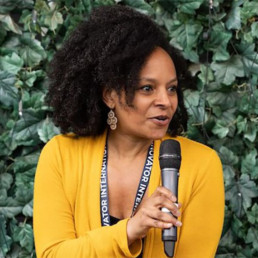
Written by Dana Saxon
Dana Saxon is an educator, writer, and family historian who seeks to address global inequities in education. Her organisation, Ancestors unKnown, changes the way pupils learn about history, themselves, and the world around them, providing opportunities for them to learn about marginalised histories and stories from their own communities.
Traditional history education can sometimes feel stale and uninspired – a series of dates and old white men who seem to have little or no relevance to the lives of today’s children. This approach, heavily focused on Eurocentric perspectives and the accomplishments of a select few, can leave many students feeling excluded and disconnected from the past.
But, as even Ofsted explained in their 2023 report about history education, “Every pupil is entitled to encounters with the richness of the past and the complexity of historical enquiry”.
A New Approach: Student Stories at the Centre
What if we reframed history education? What if we centred the learning experience around the unique stories of each child?
This is the vision driving Ancestors unKnown, a unique approach to history education that empowers young people by weaving their personal narratives into the larger context of local and global history.
At the heart of our methodology lies the belief that every child’s story is a valuable piece of the historical puzzle. We encourage students to explore their own family and community histories through oral histories and archival research. By interviewing elders, collecting family artefacts, and delving into local archives, children uncover the unique stories of their ancestors and the elders in their community, including their struggles, their triumphs, and their contributions to society.
Then, while our students are empowered to personalise historical research, we help them connect these personal narratives with the untold and often marginalised histories that have shaped our world. As a result, students learn about the contributions of diverse communities, stories about migration, struggles for social justice, and other hidden stories that lie beneath the surface of conventional historical narratives.
The Benefits of Ancestors unKnown
Our integrated approach fosters a profound sense of belonging and empowerment. When children see how their own stories connect to the larger historical narrative, they develop a deeper understanding of their place in the world. They begin to see themselves as active participants in history, not just passive observers.
Furthermore, by sharing their family histories with their classmates, children gain valuable insights into the diverse experiences and perspectives of those around them. This fosters empathy, understanding, and a greater appreciation for the people and communities around them.
With our approach, Ancestors unKnown is making history curriculum more inclusive and equitable. By centring the experiences of diverse communities and highlighting the contributions of marginalised groups, we challenge traditional narratives and create a more representative understanding of the past.
“Our community interviews were really successful!” shared a primary school teacher about their Year 5 Ancestors unKnown project.” We interviewed adults from South America, England, France, China and Nigeria! The children asked some really interesting questions and really enjoyed listening to the different family and community stories.”
Bringing Ancestors unKnown to More Classrooms
Ancestors unKnown provides schools with a toolkit and ongoing support to implement our programme during one school term for Y5 or Y6. We also offer teacher training, parent/community engagement workshops, and access to a network of local historians and storytellers as guest lecturers.
We believe that by empowering teachers, students, and their families with the tools and knowledge to uncover their own historical narratives, we can create a more inclusive and engaging learning experience for everyone.
Ready to transform history education in your school? Learn more about our programme and contact us to bring Ancestors unKnown into your classrooms.
Let’s work together to empower the next generation of historians to tell a different, more inclusive story about the past – a story that includes their ancestors.
Developing a PSHE Curriculum on Antisemitism, based on the teaching of Rabbi Lord Jonathan Sacks
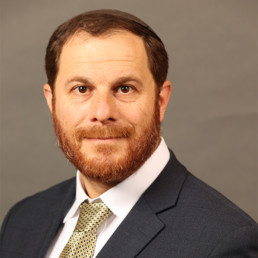
Written by Rabbi Cobi Ebrahimoff
Rabbi Cobi Ebrahimoff is UK Director of Education at The Rabbi Sacks Legacy, where his primary focus is to bring the teachings of Rabbi Sacks into schools and spearhead the development of innovative educational resources.
INTRODUCTION
Within living memory of the Holocaust, after which the world vowed “never again,” antisemitism has returned.
Rabbi Lord Jonathan Sacks offers a unique approach for students to understand why antisemitism is a danger for every single member of British society. In this four part series of lessons, students will explore:
- What is antisemitism?
- The stereotypes, prejudice and discrimination that Jewish people face
- The evolution of antisemitism and how it affects Jewish people today
- How antisemitism may affect them and how to combat it
BACKGROUND TO ANTISEMITSIM
Antisemitism is complex and often contradictory, making it difficult to define. Historically, Jews were persecuted for opposing reasons – being both poor and rich, communists and capitalists, isolated and too integrated.
So, what is antisemitism? It’s not just disliking someone for being different – that’s xenophobia. And it’s not simply criticising Israel – that’s part of democratic debate. Antisemitism is far more dangerous. It’s about persecuting Jews and denying them the right to exist as Jews, with the same rights as everyone else.
Over time, antisemitism has evolved, shifting from religious persecution in the Middle Ages to racial hatred in the 19th and 20th centuries, and now, targeting Israel’s right to exist. This new antisemitism uses human rights as a guise for prejudice.
Why should this matter to all of us? Antisemitism reflects a broader inability to accept difference. History shows that hate starting with Jews never ends with Jews. It’s a warning sign of threats to freedom, humanity, and the dignity of difference – issues that concern us all. That’s why combating antisemitism is a fight we must undertake together.
The Rabbi Sacks Legacy (RSL) is proud to present a new PSHE curriculum designed to provide a comprehensive framework for educating students about the historical and contemporary aspects of antisemitism through the prism of Rabbi Sacks’ unique approach. The curriculum aims to enrich students’ understanding of moral responsibility and create a deep appreciation of social diversity.
The curriculum meets Ofsted’s requirements to promote SMSC (Spiritual, moral, social, and cultural) development and fundamental British values. Under Section 5 inspections, Ofsted will consider how British values are promoted within schools, including the importance of tackling dis- crimination. Education on antisemitism directly supports these objectives, demonstrating the school’s commitment to creating a safe and inclusive environment for all students.
COMPREHENSIVE, READY-TO-USE RESOURCES FOR TEACHERS
Designed for teachers by teachers, the RSL PSHE curriculum comes complete with all the resources needed for seamless implementation. Teachers are provided with:
- Fully developed lesson plans with clear learning objectives aligned with SMSC and Departmental requirements.
- Differentiated activities to challenge higher-ability students and support those who need additional help, ensuring inclusivity in every classroom.
- Interactive multimedia content to engage students and bring complex topics to life.
- Assessment for learning tools to measure student progress and reinforce key challenges and benefits of living in a diverse society.
- Detailed teacher not and PowerPoint presentations, making it easy to deliver high-quality lessons with confidence.
To support high-quality delivery, teachers have access to high-quality training sessions and the opportunity to book expert-led workshops, ensuring that the curriculum is not only implemented effectively but also becomes an integral part of the school’s ethos.
ELEVATE YOUR SCHOOL’S COMMITMENT TO FUNDAMENTAL BRITISH VALUES WITH THE RSL PSHE CURRICULUM
In today’s educational landscape, the responsibility of promoting fundamental British values within schools has never been more significant. The Department for Education mandates that all schools actively promote values such as democracy, the rule of law, individual liberty, mutual respect, and tolerance of those with different faiths and beliefs. These values are integral to students’ spiritual, moral, social, and cultural (SMSC) development, forming the foundation of a cohesive and inclusive society.
The RSL PSHE curriculum empowers schools to fulfil these essential requirements. Developed with the insights of Rabbi Sacks, a leading voice in fostering interfaith dialogue and understanding, this curriculum is designed to address the challenges of antisemitism while broadening students’ understanding of diversity and respect for all.
CURRICULUM ALIGNMENT WITH SMSC DEVELOPMENT AND FUNDAMENTAL BRITISH VALUES
Promoting Mutual Respect and Tolerance
At the core of the curriculum is the “dignity of difference” principle, a concept championed by Rabbi Sacks. Through this lens, students are encouraged to explore and appreciate the benefits of our diverse society. The curriculum challenges students to confront prejudice, including antisemitism, and embrace differences with dignity.
Fostering Individual Liberty
The curriculum empowers students to think critically about the world around them, promoting individual liberty by encouraging them to form opinions.
Reinforcing the values of Democracy and the Rule of Law
The curriculum highlights the importance of the rule of law in protecting individual rights and minorities. It also promotes democratic values by encouraging discussions and debates, respecting different viewpoints, and understanding the processes that uphold democracy.
Enhancing SMSC Development
Through carefully structured sessions with clear learning objectives, differentiated tasks, and comprehensive assessment opportunities, students are guided to reflect on their moral responsibilities, develop social awareness, and cultivate a deep understanding of cultural diversity.
COMMIT TO EXCELLENCE IN EDUCATION
The RSL PSHE curriculum is more than just a teaching tool. It’s a commitment to fostering a school environment where every student learns the value of respect, tolerance, and moral responsibility. By integrating this curriculum into your school’s PSHE sessions, you are meeting Ofsted’s requirements and playing a vital role in shaping a generation that values diversity and upholds the principles of a just and inclusive society.
Build bridges. Break barriers. Adopt the RSL PSHE curriculum today!

